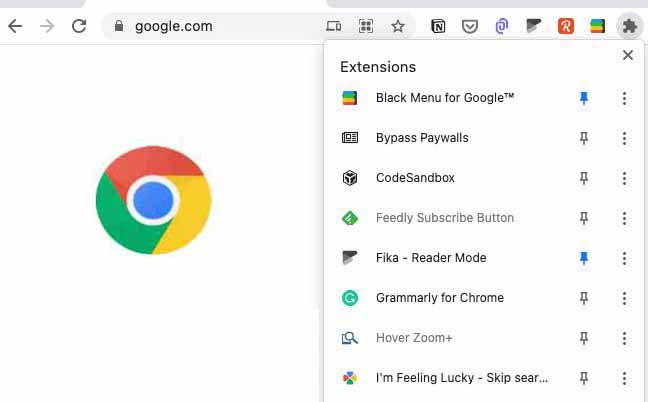
Why a fast website is important
Choosing a fast website is very important in today's society. When using a computer, people often use websites to access information, make purchases, book tickets and communicate with friends. These uses require fast and reliable Internet connections. Therefore, choosing a fast website is essential.
To determine the speed of a website, it is important to measure the time it takes for the page to load. This includes the time it takes for the page to appear on the screen, as well as for any images, videos or other content to be fully loaded. It is also important to measure any delays that may occur when navigating between different pages on the website.
One way to measure the speed of a website is to use a website speed test tool. This tool will allow you to measure the time it takes for the website to load, as well as any delays that might occur. It will also provide information on how the website is performing compared to other websites. Once the speed test is completed, it is important to analyze the results.
The analysis of the speed test results
The analysis of the speed test results is the key to understanding how the website is performing. By comparing the results to industry averages, it is possible to identify areas where the website is underperforming. This can help to identify possible areas of improvement. Additionally, the analysis can provide insight into how users are interacting with the website and potential areas where performance can be optimized. Understanding these results can help to ensure that the website is providing an optimal user experience.
Using the results of the analysis, website owners can make informed decisions on how they can improve the speed of their website. This could involve a variety of strategies such as optimizing images, minifying code, and optimizing content delivery. By understanding which strategies provide the most benefit, website owners can ensure that they are investing their time and energy in the right areas to maximize the speed of their website.
Strategies to increase the Website Speed
One strategy that website owners may not be aware of is using a content delivery network (CDN). A CDN hosts content on multiple servers around the world and delivers it to the user based on their location. This helps to speed up the delivery of content and provides a better user experience. Additionally, website owners can benefit from caching static resources such as images and scripts. Caching these resources means that they are stored in the user’s browser and won’t be re-downloaded every time the user visits the website.
By utilizing a combination of caching static resources and optimizing delivery of content, it is possible to reduce page load times and provide a better user experience. It is important to measure the speed of a website to identify areas of improvement and take action to increase its performance. Analyzing the speed of a website requires running tests to measure the time it takes for a page to fully load.
Tools such as Google’s PageSpeed Insights can be used to analyze the speed of a website and recommend ways to optimize its performance. Additionally, it is important to keep track of page load times to ensure they remain consistent over time.
We also recommend using lookkle's website speed tool, which analyzes the speed of scripts, images, css, and the overall speed of your website.
What is the speed analysis of a website for?
By analyzing the speed of a website, it is possible to determine how quickly pages are loading and how long it takes for different elements to be rendered. This can provide valuable insight into the performance of the website and the user experience it offers. Additionally, the analysis can provide insight into potential areas where resources can be allocated to improve the speed of the website.
When browsing the web, people usually make a lot of web requests by typing in URLs into their browsers. These requests tell websites what pages they want to see and how they want them to appear on the screen. Speed depends on the number of pages a site has and the size of each page. Therefore, choosing a fast website depends on knowing these factors.
Tools to analyze the speed of a Website
To analyze the speed of a website, it is important to monitor the response time for each page and get an overall average. This can be done using a number of tools, such as the Google Page speed Insights, which can measure performance from a user's perspective. It is also beneficial to use third-party services such as GTmetrix, lookkle's website speed tool, which provides a detailed analysis of the website's speed. These tools can provide insights into the number of requests that a website makes, the size of the files, and the loading time. Analysing this data can help identify areas where a website can be improved to reduce loading times and improve user experience. Additionally, caching and minifying code can help speed up the loading times of a website.
How providers help improve the speed of a website
A slow website is frustrating to browse through because it takes longer for websites to load and respond to web requests. In addition, slow websites are hard to use for online transactions since people have to wait for transactions to finish before making new requests. Providers can help you speed up your website by using certain technologies such as caching and Domain Name System (DNS) lookup. Caching stores frequently accessed data in different places on the server so users can access it more quickly. DNS lookup can be used to speed up hard-coded URLs in web applications by looking up the address rather than typing it in repeatedly.
By implementing these technologies, providers can help you reduce the time it takes to access and load your web pages. Furthermore, they can also help optimize your code and optimize your server settings in order to realize the maximum performance from your website. This can help improve the overall user experience as well as decrease the amount of bandwidth used. Additionally, providers can also provide advice on how to reduce the number of requests to your web server, which can help speed up your website even further.
Recommended time to analyze the Speed of a Website
Analyzing the speed of a website is not a one-time task, but rather an ongoing process. As technology changes and grows, so do the requirements for web performance. It is important to continuously monitor and analyze the speed of your website in order to stay ahead of the competition.
By analyzing the speed of a website, businesses can gain valuable insights into how fast their pages are loading, identify areas that need improvement, and measure the effectiveness of their optimizations. Additionally, it can be used to benchmark a website against competitors and see how it stacks up. By leveraging the data from speed tests, businesses can determine which optimizations provide the highest speed.
By following the advice and optimizations provided by providers, they can help you achieve a much faster loading website. This is especially important when it comes to hosting a website that is utilized by many visitors. If a website takes too long to load, visitors may lose interest and leave the page, resulting in a potential drop in traffic and revenue.
Choosing a fast website helps you enjoy Internet connections more efficiently and makes your browsing experience better. It also encourages you to make fewer web requests, which improves the performance of your browser and computer. Therefore, choosing a fast website makes your browsing experience much more enjoyable!
Tips on SEO and Online Business
Next Articles
Previous Articles















